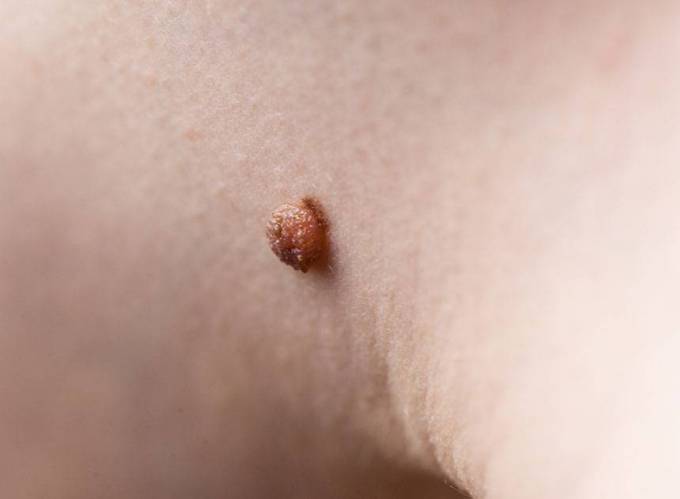Skin Tags Removal: A Comprehensive Overview
Published By Dynamic Clinic, 11 Oct 2024

Skin tags are small, benign growths that can appear on various parts of the body, often in areas where skin rubs against skin or clothing. Commonly found in regions such as the neck, armpits, groin, and eyelids, these growths can be annoying but are typically harmless. For many, the presence of skin tags can lead to aesthetic concerns or discomfort, prompting the question: How to Remove Skin Tags on Inner Thigh In this comprehensive overview, we will explore the different methods of skin tag removal, their effectiveness, and considerations for each approach.
Understanding Skin Tags
Skin tags, also known as acrochordons, are small, soft, skin-colored growths that can vary in size. They often appear as small flaps of skin hanging from the surface. While they are not associated with any pain or significant health issues, their presence can sometimes lead to irritation, especially if they are located in areas prone to friction.
Causes of Skin Tags
The exact cause of skin tags is not entirely understood, but several factors may contribute to their development:
- Friction: Skin tags often form in areas where skin rubs against skin or clothing, such as the inner thighs, armpits, and neck.
- Genetics: Some individuals may be more prone to developing skin tags due to hereditary factors.
- Hormonal Changes: Hormonal fluctuations, such as those experienced during pregnancy, may contribute to the formation of skin tags.
- Obesity: Increased body weight may lead to more skin folds, which can enhance the likelihood of developing skin tags.
Understanding these factors can help individuals recognize the potential for skin tag development and take preventive measures when possible.
Methods for Skin Tag Removal
When it comes to skin tag removal, there are several methods available, each varying in terms of effectiveness, safety, and recovery time. Here, we explore some of the most common techniques used in dermatology.
1. Surgical Excision
Surgical excision involves the removal of the skin tag using a scalpel. This method is often performed in a clinical setting and is suitable for larger skin tags or those that may be problematic.
Procedure
- Preparation: The area surrounding the skin tag is cleaned and sterilized.
- Anesthesia: Local anesthesia may be administered to minimize discomfort.
- Removal: The skin tag is excised with a scalpel, and the incision is closed with stitches if necessary.
- Aftercare: Post-operative care instructions will be provided to ensure proper healing.
2. Cryotherapy
Cryotherapy is a popular method for removing skin tags, utilizing extreme cold to freeze the growth. This technique is effective for various sizes of skin tags and is relatively quick.
Procedure
- Application of Nitrogen: Liquid nitrogen is applied to the skin tag using a cotton swab or spray device.
- Freezing: The skin tag freezes and eventually falls off as the skin heals.
- Healing Process: There may be some redness or blistering following the procedure, but recovery is typically swift.
3. Electrosurgery
Electrosurgery involves using high-frequency electrical currents to remove skin tags. This method is effective for smaller tags and can minimize bleeding during the procedure.
Procedure
- Preparation: The area is cleaned and prepared for the procedure.
- Anesthesia: Local anesthesia may be applied for comfort.
- Electrosurgery: An electric current is applied to the skin tag, causing it to be removed or vaporized.
- Post-Procedure Care: Patients are advised on aftercare to prevent infection and promote healing.
4. Ligation
Ligation is a method that involves cutting off the blood supply to the skin tag, causing it to fall off eventually.
Procedure
- String Application: A thin string or thread is tied around the base of the skin tag.
- Blood Supply Cutoff: As the blood supply is cut off, the skin tag will begin to wither and fall off.
- Timeframe: This process may take several days to weeks for the tag to fully detach.
At-Home Methods for Skin Tag Removal (Not Recommended)
While some individuals may consider at-home methods for skin tag removal, it is important to note that these approaches are often not recommended due to the risk of infection, scarring, or complications. Professional removal methods, as previously discussed, provide safer and more effective results.
Importance of Professional Evaluation
Before deciding on any skin tag removal method, it is crucial to consult with a healthcare professional or dermatologist. They can assess the skin tag, confirm its benign nature, and recommend the most appropriate removal technique based on individual circumstances.
Recovery and Aftercare
After undergoing any skin tag removal procedure, proper aftercare is essential for optimal healing. Here are some general guidelines to follow:
1. Keep the Area Clean
- Cleaning: Gently cleanse the area with mild soap and water to prevent infection.
- Drying: Pat the area dry with a clean towel, avoiding vigorous rubbing.
2. Avoid Irritation
- Clothing: Wear loose-fitting clothing to minimize friction against the treated area.
- Activities: Avoid strenuous activities or excessive sweating until the area has healed.
3. Monitor for Complications
- Signs of Infection: Be vigilant for signs of infection, such as increased redness, swelling, or pus.
- Follow-Up: Schedule any recommended follow-up appointments with your healthcare provider to ensure proper healing.
When to Seek Medical Attention
While skin tags are generally harmless, there are certain situations where medical evaluation is warranted. Seek medical attention if you notice:
- Rapid changes in the size, shape, or color of a skin tag.
- Bleeding or pain associated with a skin tag.
- New skin growths that appear suddenly or have unusual characteristics.
Conclusion
In summary, skin tags are common benign growths that can be removed through various methods, including surgical excision, cryotherapy, electrosurgery, and ligation. Understanding how to remove skin tags on inner thighs, or any other location, requires consulting with a healthcare professional for a safe and effective approach. By following appropriate aftercare and monitoring for any complications, individuals can achieve satisfactory results and restore their confidence.
